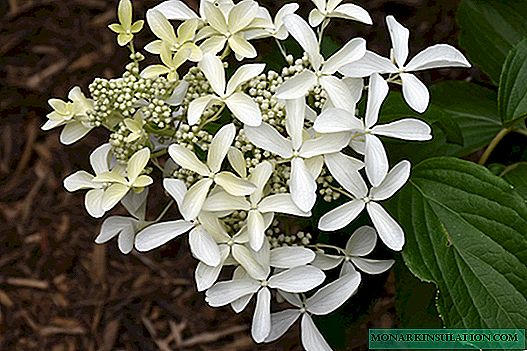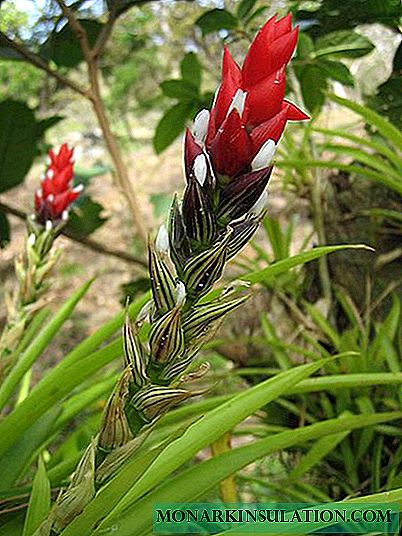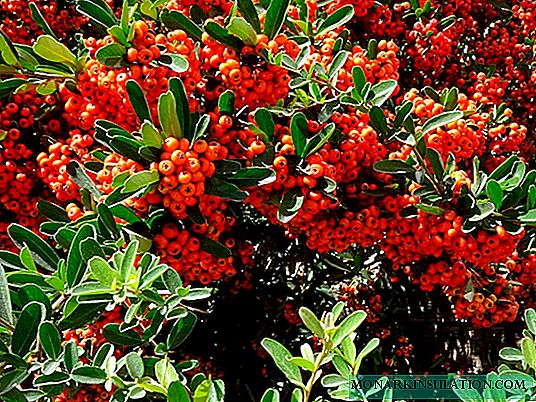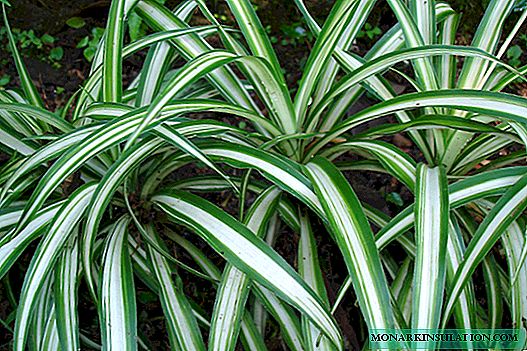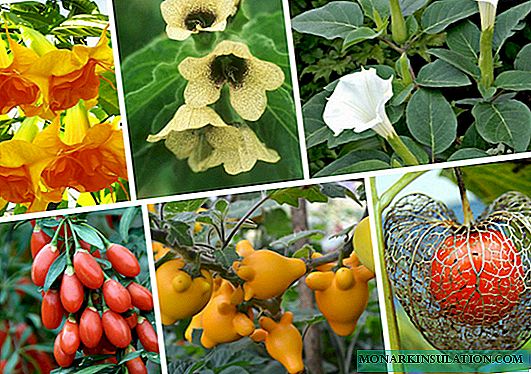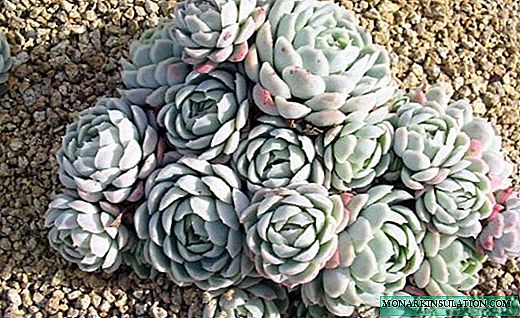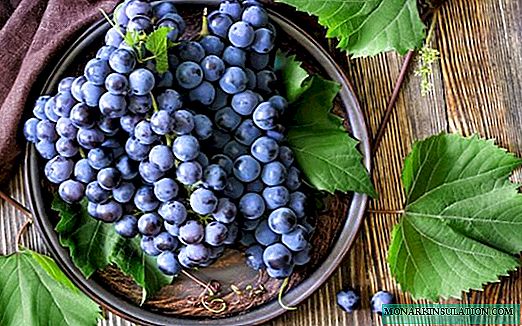
According to various estimates of scientists, people began to grow grapes 6-8 thousand years ago. Today there are more than 20 thousand varieties of culture, but selection does not stand still, every year scientists and amateur breeders bring out new ones. One of the most notable novelties of the last decade was the early ripening variety Athos.
Atos grape story
Variety Athos can still be considered a novelty in our garden plots. is he was bred by the efforts of Ukrainian winegrower V.K. Bondarchuk in the Luhansk region in 2009, and the first crop was harvested in 2012. Athos has a hybrid origin and is the result of a successful crossing of varieties of Talisman and Kodryanka.
Today this variety already has a fairly wide geography. He gained popularity in Ukraine and in the south of Russia.
Varietal characteristics
The main advantage of the table grape variety Athos is its early maturity. The growing season is only 95-100 days. If no force majeure happens, the harvest will be ready in late July - early August. Also, the indisputable advantage of Athos is the almost 100% ripening of berries in clusters.
The vine at Athos has a nice brown color with red knots. A leaf of saturated green color, medium size, roundish, dissected. The variety is perfectly rooted by cuttings. Athos requires shelter for the winter, but it is quite frost-resistant and can withstand frosts to -23 ° C. Full fruiting occurs in the 3rd year.

The mass of berries in Athos reaches 10-12 g
Athos is a high-yielding variety: 130 quintals of berries can be collected per hectare. A ripe bunch weighs from 700 to 1200 g (some - 1500 g). There is no need for rationing. One bush can withstand weight up to 20 kg. The berries are dark blue in color, elongated, weigh 7-12 g. The flesh is burgundy, the skin is dense, the taste is rich, harmonious, sweet, but tinted by a subtle sourness.
Berries are not very firmly held on a twig, so an insignificant part of them can crumble.
Despite the early maturity, you can take your time with the harvest. Ripe berries do not crack within a month after ripening. Also, the fruits of Athos will perfectly raisin.

The mass of one bunch of Atos grapes reaches 1.5 kg
Unlike his parent, Kodrianka, Athos does not show a tendency to pea.
Athos fruits are best suited for fresh consumption, but they also make jam, compotes, and liquors. This is a table grape variety, so you can make a quality home-made wine from it if you mix berries with the fruits of a wine variety.
Video: Atos grape harvest
Features of planting and growing Atos grape varieties
In stores and markets in the spring, as a rule, annual Athos seedlings are sold, which must meet the following requirements:
- First of all, pay attention to the roots - they must be elastic, not break into a bend. Ask the seller to cut with scissors or secateurs. On the cut, the root should be white. A brown or brown hue is a sign of a dead seedling. If you have the opportunity to purchase planting material with a closed root system, then do not waste money. Such seedlings take root better.
- Make a slight scratch with your fingernail on the shoot. Under the dark bark, a layer of vibrant green tissue should be visible. This is also a sure sign that the grape is alive.
- The viability of the seedling can be judged by the kidneys. When pressed, the scales should not crack or exfoliate.
Today, seedlings coated with special wax are often found on sale. It reduces transpiration (the process of water moving through a plant), has antibacterial properties and does not interfere with the growth and development of seedlings. No need to try to scrape the wax from the shoot, as you will damage the vine. When the shoot starts to grow, he himself will easily destroy his temporary defense.
Atos grape planting algorithm:
- First of all, you need to choose the right place for the future vineyard. The culture does not tolerate close occurrence of groundwater and will wither away with poor drainage. Moreover, a humid microclimate contributes to the development of fungal diseases. Also, grapes feel bad in open, unshaded areas. He needs free space, but always with neighbors like bushes or low trees.
- In the selected area, you need to dig a hole with a diameter of 35 cm and a depth of 40-50 cm. Many gardeners for this purpose do not use a shovel, but an earthen drill. This is especially convenient if you are planting several bushes at once.

For the convenience of planting several bushes, you can dig not a hole, but a trench
- Mix the soil from the hole with humus and sand in a ratio of 2: 1: 1.
- At the bottom of the hole, pour 10-12 cm of expanded clay or broken brick. This will create drainage and provide the roots of the grapes with the necessary amount of air in the soil.

At the bottom of the pit for planting grapes, it is necessary to pour drainage
- Sprinkle drainage on top of the prepared soil mixture. Place the seedling in the hole. Gently spread the roots. If they are too long, trim them. This does not harm the plant. But in no case should the roots be bent up. It is very important to arrange a seedling in the hole so that the vaccination site rises 1-1.5 cm above the ground.
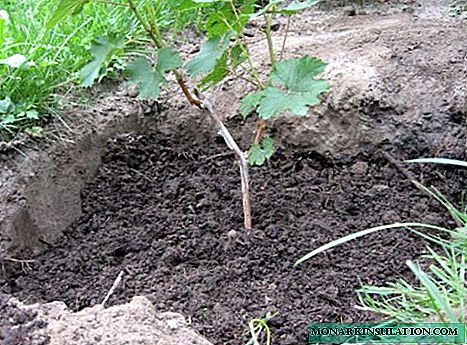
When planting a grape seedling, the place of grafting should not be underground
- Fill the hole with the prepared soil and pour plenty of water in one bucket. Due to this, root hairs will tightly bind to microscopic particles of soil.
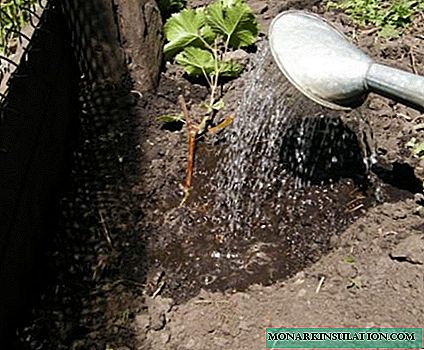
After planting, grape seedling should be abundantly watered
- When the water is absorbed, add the soil mixture into the pit to ground level and gently compact.
- Sprinkle the grapes on top with loose earth so that a small mound forms above the seedling.
Video: spring planting of grapes
Care Features
Athos can hardly be called a moody variety; nevertheless, it requires the holding of classic agricultural activities. Grapes are not too picky about moisture. All he needs is regular watering once a week. Weeding and loosening of soil in the near-stem circle is also necessary. Top dressing must be carried out with the following frequency:
- Before the buds open, prepare a nutritious mixture: in 10 l of water, dissolve 20 g of superphosphate, 10 g of ammonium nitrate and 5 g of potassium salt. 10 l will be enough for one bush of grapes.
- Refill Athos with this mixture before flowering (also at the rate of 10 liters per bush).
- Before ripening fruits from the mixture, eliminate ammonium nitrate. Otherwise, an excess of nitrogen in the soil will stimulate vegetative growth and at the same time inhibit the ripening of grapes.
- In autumn, grapes are fed with potassium, which will help plants successfully winter. Use potassium salt, which contains up to 40% potassium in its composition.
- Feed Athos with manure every 3 years. Spread the fertilizer evenly over the surface of the earth and dig a shovel to the depth of the bayonet.
Pruning
Athos is a vigorous variety. Over the summer, some vines are able to stretch for 7 m. For this reason, you can not do without pruning, which will ensure optimal distribution of heat and light. For Athos, a fanless, four-arm, fanless formation is suitable:
- Seedling in the spring plant vertically. For better ripening of the vine, cover the plants with a film or spanbond.
- In the autumn of the first year, select the 2 strongest shoots and cut them, leaving 2-3 buds.
- All summer of the second year, shoots will grow from the abandoned buds. Remove emerging inflorescences.
- In early August, pinch the tops for better ripening shoots.
- In autumn, the shoots are distributed on different sides and cut to ripened wood. As a result, the bush takes the form of a fan.
- In the spring of the third year, remove all the kidneys except the top three.
- In the fall, the shoots are cut off: the lower shoots are 2-3 kidneys from the base of the shoot (these are knots of substitution), the upper shoots are 6-8 buds (these are fruit arrows on which clusters will be tied in the future).
- In subsequent years, form a bush in the same way.
Video: fan-cut grapes
If in the autumn of the first year you found that the seedling did not gain strength over the past summer, for example, it grew by only 30 cm, then it makes sense to apply pruning to the reverse growth. To do this, cut the shoots in the fall, leaving only one kidney on them. This will help the young plant build up strength and actively grow next summer, forming a more viable vine.
Diseases, their treatment and prevention
Most grape diseases are fungal in nature.
Table: Common Grape Fungal Diseases
| Disease | Pathogen | Symptoms | Favorable conditions for infection |
| Anthracnose | Mushroom Gloeosporium ampelophagum | The first symptom is the appearance on the grape leaves of brownish spots with a white border. Gradually, the affected areas become larger, and the tissue in them begins to die. The same spots begin to appear on shoots, petioles, peduncles and berries. As a result, the affected clusters dry out, and the berries lose their presentation, taste, and quickly deteriorate. | The emergence of the disease contribute to early spring rainfall. |
| Mildew (downy mildew) | Mushroom Plasmopara viticola | In early summer, well-visible oily spots appear on the surface of the leaves. Then, in wet weather, on the underside of the leaf, white rashes resembling mold can be noticed. Gradually, necrosis begins at the site of these spots, the affected leaves dry up and fall off. Over time, pedicels, buds, flowers, and fruits are affected. | The optimum temperature for this parasitic fungus is 20-25 ° C. Also, the development of the disease contribute to rain and heavy dew. |
| Oidium (powdery mildew) | Mushroom Uncinula necator | All parts of the plant are covered with a whitish coating that resembles flour or ash. Such dust is best seen on the surface of the leaves. Gradually, they begin to fade and dry. Berries crack, burst, dry or rot. | The disease is especially active at a temperature of 25-35 ° C. Much more often affected poorly ventilated planting of grapes. |
| Gray rot | Mushroom Botrytis cinerea | The disease affects all green parts of the plant. The grapes are covered with a grayish coating, which is dusty (scatters spores) if you touch it. Dry summer weather saves grapes from the further spread of the disease. In this case, the damage will be limited to a few berries. But wet summer will lead to the fact that the whole bunch will turn into shapeless porridge. | Rot affects primarily fresh wounds, including those that have occurred during vaccination. The disease also contributes to wet and cold spring. |
| Black spotting | Deuteromycetes class mushroom | In June, discolored spots appear on lignified shoots, which blacken over time due to the growth of the mycelium. Gradually, the affected areas rot and die, and the spots begin to resemble scabs. Necrosis also forms on the leaves, where they look like brown spots with a whitish border. Diseased leaf blades dry and fall. | Favorable conditions for the development of the disease - a temperature of 25-35 ° C with an air humidity of 85%. |
One of the important preventive procedures against fungal diseases is the autumn harvest of litter under the grape planting. Green foliage is an ideal nursery of parasitic fungi. It is necessary not only to remove fallen leaves and branches, but also to burn them outside the garden.
Photo Gallery: Grape Disease

- Black spotted grape berries lose their presentation

- Grapes affected by anthranctosis become stained
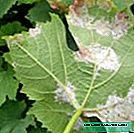
- Mildew-affected vine leaves covered with mold-like stains
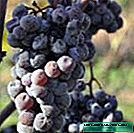
- Berries affected by gray rot are inedible

- A bunch of grapes affected by oidium is covered with a coating
Drugs designed to combat fungal diseases have a common name - fungicides. Today, a huge assortment of such drugs is presented on store shelves. However, it is impossible to predict in advance how a particular drug will affect a variety that grows in your garden area. Therefore, today the famous copper sulfate remains the most popular drug and prophylactic for fungal diseases of grapes. Processing is carried out according to the following scheme:
- The first treatment is carried out in early spring in the morning or in the evening in dry weather, when the air temperature rises above 5aboutC. For spraying use a 0.5-1% solution. Consumption: 3.5-4 liters per 1 m2 landings. Never spray blue vitriol on grapes that have already entered the flowering phase.
- Repeatedly spray the grapes with copper sulfate in the fall after leaf fall. Use a 1% solution to prevent leaf burns.
- For the treatment of grape wounds, a more concentrated 3% solution is used. Before planting for preventive purposes, you can also water the roots with a 1% solution. This will reduce the likelihood of illness.
Video: processing of grapes with copper sulphate
Grade Reviews
This year, before all grape varieties, the crop ripened (at three vineyards located in different places, at the same time the berries ripened by July 15 in Lugansk and in the suburbs) of the hybrid form Atos (Laura x Kodryanka + SP) of the selection of the old Belgian vineyard Bondarchuk Valery Konstantinovich, which unfortunately recently died. Valery Konstantinovich was friends with Ivan Alexandrovich Kostrikin, on the advice of which he conducted selection work. Kostrikin described some of his hybrid forms in his brochures. One of the latest innovations that Valery Konstantinovich proposed for testing in the fall of 2009 was Mr. F. Athos. In the spring of 2010, its green seedling was planted; this year it yielded a crop. The berry is slightly nipple in shape, large, dark blue, crisp flesh, very good taste with a harmonious combination of sugar and acidity. The clusters are medium-soft, conical; for the first harvest they are quite large. In appearance, the clusters slightly resemble Nadezhda Azos, but the berries in them are uniform, there are no peas at all, and the clusters are more compact in shape. This hybrid form can rightfully be considered the opening of this grape season.
Sergey Criulya //forum.vinograd.info/showthread.php?t=10299
This year there were 400 grams of signaling, left a good impression, I liked, ripened very early in late July, good flowering, beautiful shape of a bunch and a berry, I liked the taste, half of the bunch still hangs, the berry slightly withered.
Yuri Lavrinov //forum.vinograd.info/showthread.php?t=10299
Fourth vegetation 24 shoots of 40 clusters. The weight of the clusters is mainly from 700 g to 1500 g, and the berry is 7-10 g, the taste is harmonious with crunch, who tried better in comparison with the cheesecake. This year they began to cut off from July 13, and the surplus began to sell from July 18. Buyers noted a very salable appearance. There was no cracking of berries for 3 years. Stability at the mascot level.
Gerus Nikolay //forum.vinograd.info/showthread.php?t=10299
Athos is the 4th year, this season overloaded with shoots and bunches. Hanging more than 20 kg. Surprisingly he pulled it all out! The berry left at a good price in the first decade of August. He left one bunch covered, hanged until mid-September - cut it off and demonstrated it as an advertisement on the market. As a result, 25 seedlings available in the school were planned in 2 hours! Everyone who tried the berry, without further ado, asked me to write it down. In April 2013, at the fair of the club "Vine of Donbass", one Kharkiv citizen purchased 2 chubuk from me, a little diverged among fellow countrymen.
alex_k //forum.vinograd.info/showthread.php?t=10299
Atos table grapes are distinguished by high productivity, resistance to frost and excellent taste of berries.But its main advantage is an early ripening period.










